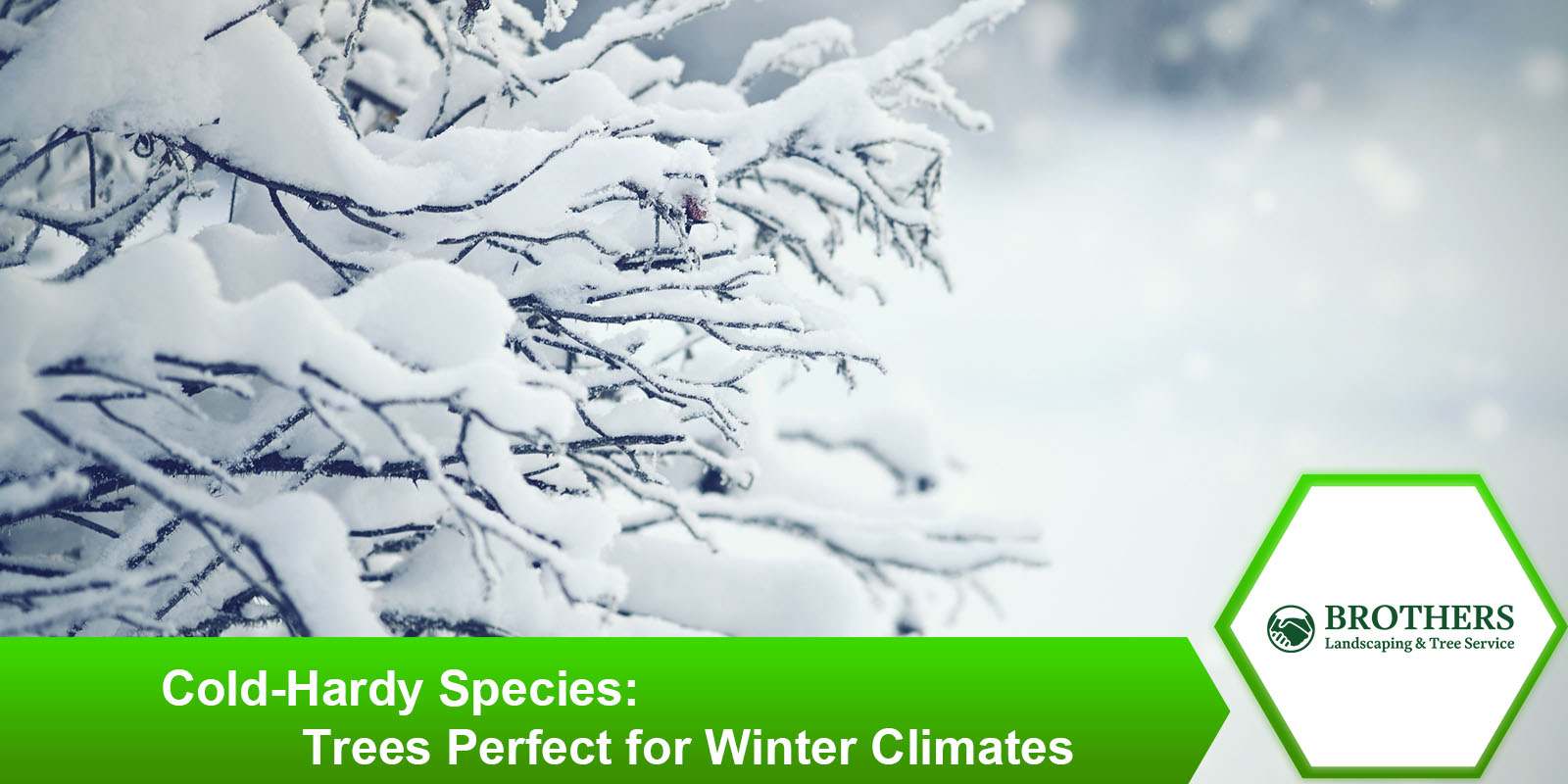
Choosing the right cold-hardy species ensures your trees thrive even in the harshest winters. These trees are specially adapted to withstand freezing temperatures, frost, and snow, making them ideal for year-round landscapes. This guide highlights some of the best cold-hardy tree options and offers tips for selecting species that complement your property.
Top Cold-Hardy Trees for Winter Landscapes
Evergreen Trees for Year-Round Beauty
Evergreens are an excellent choice for maintaining greenery during winter months. They provide structure and color to otherwise barren landscapes.
- Douglas Fir: A versatile tree that’s both hardy and visually striking.
- Eastern White Pine: Offers soft, feathery needles and thrives in cold climates.
- Norway Spruce: Known for its durability and dense foliage.
Deciduous Trees for Seasonal Interest
Deciduous trees offer dramatic fall colors and adapt well to winter conditions.
- Sugar Maple: Known for vibrant autumn hues and strong resilience to cold.
- Paper Birch: Features striking white bark that stands out in snowy landscapes.
- Red Oak: A durable tree that tolerates cold temperatures and provides shade in summer.
Selecting the Right Cold-Hardy Species for Your Property
Consider Climate and Soil Type
Matching tree species to your local conditions ensures they thrive with minimal intervention.
- Climate Zones: Choose trees suitable for your USDA hardiness zone.
- Soil Conditions: Ensure the soil drains well and supports root growth.
Benefits of Native Cold-Hardy Trees
Native species are naturally adapted to the local environment, making them more resilient and lower-maintenance.
- Ecological Harmony: Supports local wildlife and reduces the need for fertilizers.
- Disease Resistance: Native trees are less susceptible to local pests and diseases.
Enhance Your Landscape with Cold-Hardy Trees
Cold-hardy species are essential for creating a resilient, beautiful landscape that thrives in winter. By selecting the right trees, you can ensure year-round beauty and strength against the elements. For expert guidance on choosing cold-hardy trees in Belfair, Tacoma, or Mason County, call us at (360) 286-8510 and start planning your winter-ready landscape today.
Winter storms can wreak havoc on trees, leading to broken branches, uprooted trunks, and property damage. Properly preparing for storms helps safeguard your trees and minimize risks. From pruning to staking, this guide offers practical tips to ensure your trees withstand the challenges of stormy weather.
Understanding Storm Risks for Trees
Common Storm-Related Tree Damage
Winter storms can affect trees in several ways, especially those that are already weak or poorly maintained.
- Broken Branches: Heavy snow and ice accumulation can cause branches to snap.
- Uprooting: Saturated soil combined with strong winds can uproot shallow-rooted trees.
- Trunk Splitting: Sudden temperature changes and wind pressure may cause splits.
Identifying Vulnerable Trees
Recognizing trees that are more likely to sustain damage allows you to take proactive measures.
- Dead or Diseased Trees: These are the most vulnerable during storms.
- Overgrown or Leaning Trees: Tall, unpruned trees or those leaning excessively pose greater risks.
- Young or Newly Planted Trees: Their roots may not be strong enough to withstand heavy winds.
Steps to Prepare Trees for Storms
Pruning for Safety and Stability
Pruning is one of the best ways to prepare trees for storms. Remove weak or damaged branches to reduce the risk of breakage.
- Focus on Deadwood: Eliminate dead or diseased branches to prevent them from falling.
- Thin the Crown: Reduce wind resistance by trimming the canopy, allowing winds to pass through.
- Hire Professionals: For large or complex trees, enlist experts to ensure safe and effective pruning.
Staking and Supporting Trees
Staking helps stabilize young or newly planted trees, keeping them upright during strong winds.
- Use Strong Stakes: Place stakes securely in the ground on either side of the tree.
- Tie Loosely: Use soft ties to allow slight movement, which helps roots grow stronger.
- Remove After Stabilization: Stakes should only remain for one growing season to avoid hindering growth.
Keep Your Trees Safe During Winter Storms
Preparing for storms ensures your trees remain stable, healthy, and less likely to cause damage. Pruning, staking, and regular maintenance go a long way in reducing storm-related risks. For professional tree care services in Belfair, Tacoma, or Mason County, contact us at (360) 286-8510 and protect your trees from winter storms.
